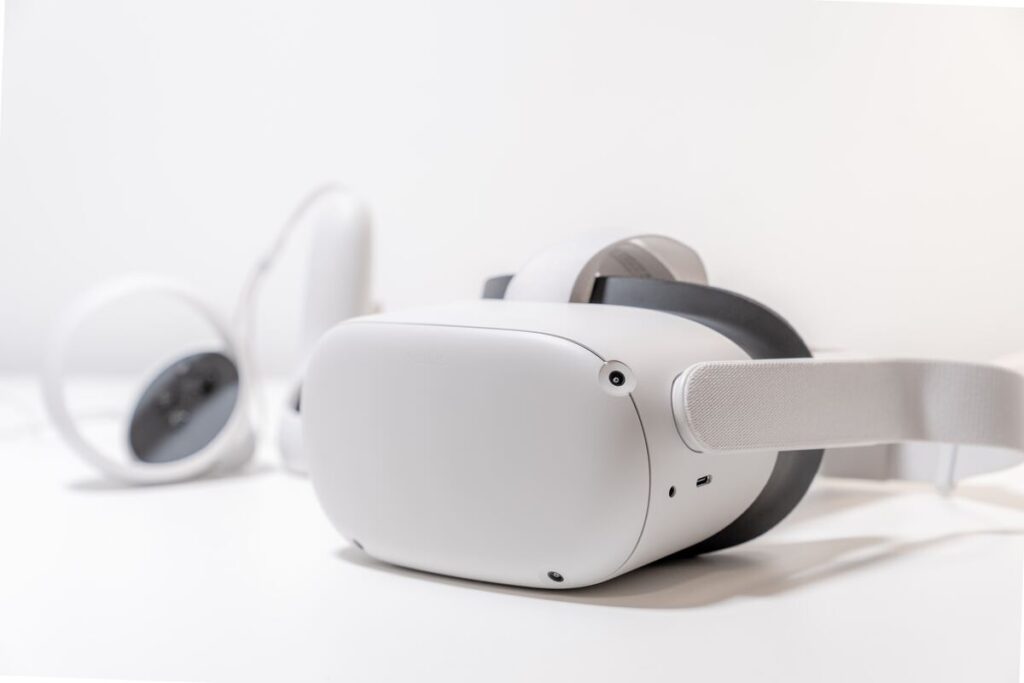Exclusive Neuroject Article: The construction sector has always been at the forefront of innovation, frequently distinguished by its harsh surroundings and difficult duties. The industry has undergone a considerable transition in recent years, driven by technology, and one of the most exciting new areas is wearable technology in construction. Wearable technology is transforming how construction industry experts approach their work, from smart helmets that increase worker safety to exoskeletons that improve physical capabilities.
In this era of wearable technology in construction is more than just toys; they are instruments that boost productivity, empower workers, and raise the bar for safety on construction sites. They promise a future in which building projects are carried out with unmatched accuracy, speed, and safety thanks to their ability to bridge the gap between human potential and technical breakthroughs.
Table of Contents
Introduction
Formerly only found in science fiction, wearable technology in construction is already transforming numerous businesses around the world. Wearable technology is rapidly advancing in the construction industry, where efficiency, safety, and data-driven decision-making are critical. In order to shed light on the creative solutions that are revolutionizing the business, this article examines the top wearable technology trends in the construction industry.
Construction has long been known for its labor-intensive nature, hazardous working conditions, and requirement for exact coordination between personnel, equipment, and supplies. By strengthening safety procedures, boosting productivity, and enabling real-time data collecting and analysis, wearable technology in construction has the potential to change these elements.
This article is based on a wide variety of sources, including academic studies, business reports, and actual case studies. We look at the most recent advancements in wearable technology in construction and provide information on their uses, advantages, and potential drawbacks. In order to empower stakeholders to make knowledgeable decisions about the adoption of technology, the objective is to provide a thorough overview of the present environment of wearable technology in construction.
The use of wearable technology in construction is extensive. Wearable technology is ushering in a new era of construction, from smart helmets with augmented reality (AR) displays that improve worker safety and efficiency to exoskeletons that lessen the physical strain on laborers. Real-time health and safety insights are provided by biometric monitoring systems and hands-free access to critical information on the job site is made possible by AR glasses.
Understanding these trends and their ramifications is essential if the construction sector is to take full advantage of wearable technology’s transformative potential. Each trend is examined in more detail in the following sections, which offer a deeper comprehension of the technologies and how they are influencing the future of buildings.

Wearable Technology in Construction Overview
Once a niche idea, wearable technology is already revolutionizing many different industries, including the building trades. These primarily on-body wearable gadgets have sensors, communication tools, and computer capability. Wearable technology in construction is developing to improve productivity, safety, and data collection, ushering in a new era of effectiveness and creativity.
1. Enhancing Safety
Exoskeletons, safety vests with built-in sensors, and smart helmets are a few examples of wearable technology used in the building industry. Through real-time monitoring of working conditions, employee health, and possible risks, these advances seek to reduce workplace accidents and enhance overall safety. Smart helmets, for instance, can detect threats like falling items or high temperatures and warn users of them.
2. Boosting Productivity
Wearable technology in construction can greatly increase worker productivity by giving them immediate access to vital information. For instance, augmented reality (AR) glasses project digital information into the actual world, helping workers with tasks like map reading, equipment operation, and navigation. This technology reduces mistakes and expedites work.
3. Data Collection and Analysis
Massive volumes of data are collected by wearable technology in construction, and this information is useful for decision-making and project management. Project managers can streamline workflows and guarantee employee well-being by using wearable sensors to monitor workers’ movements and vital signs. For example, biometric monitoring can aid in preventing overwork and fatigue.
4. Communication and Collaboration
Wearables let construction teams communicate and collaborate more effectively. Employees who have smartwatches or headsets at their disposal can communicate in real-time, share information, and get project updates without stopping what they’re doing. This improves problem-solving and teamwork on building sites.
5. Trending Innovations
The usage of drones and robots that are combined with wearables for jobs like site inspection, surveying, and material delivery is one of the newest developments. These innovations promise to automate risky and repetitive jobs, cutting down on physical labor and boosting productivity.
Cost, data security, and user acceptance issues must be resolved when the construction sector adopts wearable technology. The potential advantages, however, are significant and might result in increased safety, a decline in injuries, increased productivity, and better decision-making.
With constant research and development, wearable technology in construction is dynamic. Wearable technology in construction is being developed by businesses like Daqri, Trimble, and Ekso Bionics, and it is being promoted by groups like the Associated General Contractors of America (AGC).
Wearable technology in construction is transforming the construction sector by improving communication, data collection, safety, and production. The broad adoption of these technologies in construction processes will probably increase as they develop, ushering in a new era of construction efficiency and safety.
Suggested articles to read: Construction Site Safety | Construction Safety Sensors | Construction Safety Tips
Current Landscape of Wearable Technology in Construction
The adoption of cutting-edge technological solutions aimed at improving safety, productivity, and efficiency on construction sites is currently characterized by a gradual but significant transition in the wearable technology landscape in the construction sector. This transformation is being fueled by a number of variables, such as technological developments, tightening safety laws, and rising public awareness of the potential advantages that wearables may provide.
Safety and Injury Prevention
The emphasis on safety in the construction sector is one of the main factors driving the adoption of wearable technology. Wearables like smart helmets that have sensors and cameras incorporated in can track a worker’s movements and the surrounding surroundings. These tools can instantly notify staff members and managers of potential safety risks, assisting in the reduction of accidents and injuries.
Productivity and Efficiency
Additionally, wearable technology in construction is being used to increase productivity. By supporting heavy lifting and repeated jobs, exoskeletons, for example, can lessen the physical stress on construction workers. This increases worker comfort while simultaneously increasing productivity and lowering the risk of musculoskeletal injuries.
Data Collection and Analysis
Data on worker behaviors and worksite circumstances can be collected via wearable technology in construction. By analyzing this data, it is possible to spot trends, improve processes, and come to wise judgments. For instance, wearable GPS trackers can deliver accurate location information for employees and equipment, facilitating better resource management.
Communication and Collaboration
Real-time communication between construction teams is made possible by wearable communication equipment like smart glasses or headsets. Without the use of paper documents or mobile devices, this technology enables workers to share information, view plans, and get instructions, enhancing teamwork and lowering error rates.
Adoption Challenges
Although wearable technology in construction has a lot of potential, adoption in the construction industry is difficult. Aspects including costs, data security worries, and the requirement for employee training must be taken into account. For wearable technology to be widely accepted, it must be pleasant and not restrict worker movement.
By solving safety concerns, boosting productivity, enabling data-driven decision-making, and increasing communication, wearable technology is gradually changing the construction sector. Even though there are still difficulties, the situation today points to a bright future for the use of wearable technology in construction procedures.
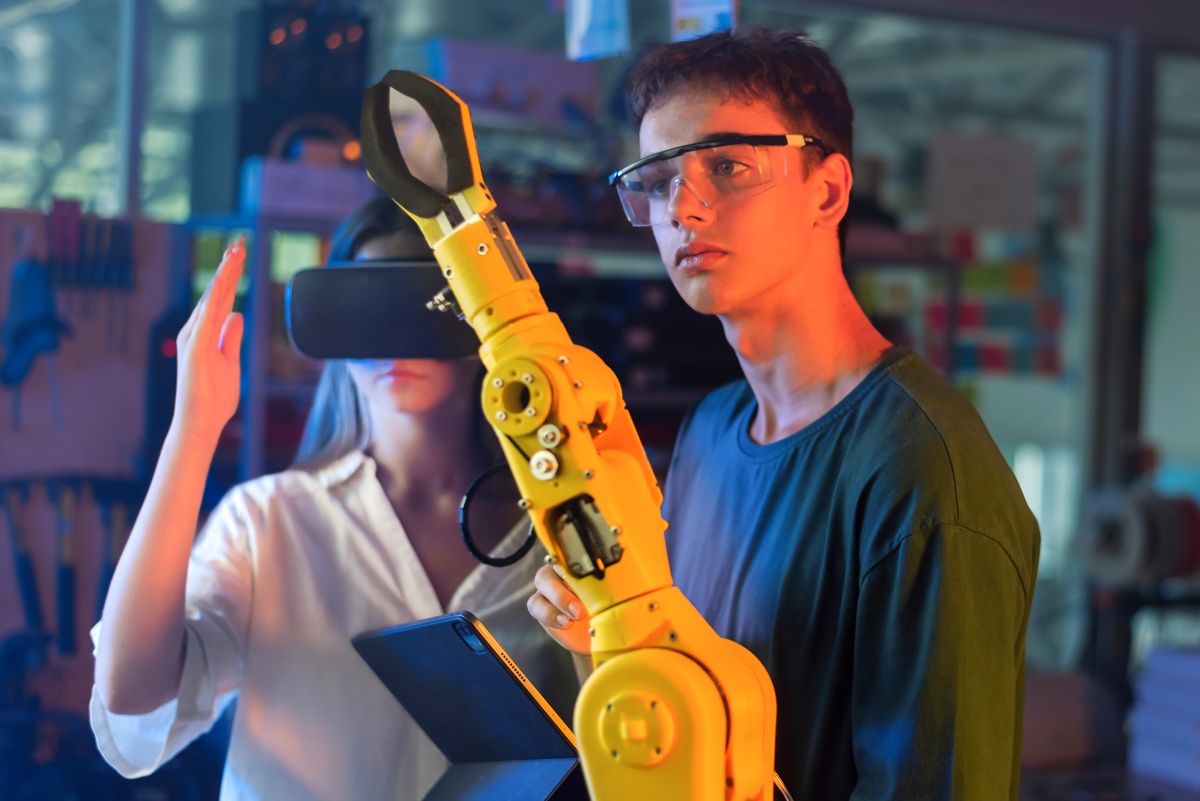
Top Trends in Wearable Technology in Construction
Wearable technology in construction has become a transformational force in our quick-paced digital age by easily blending into our daily lives. Wearables have transformed how we engage with technology, from connected smartwatches to glasses that enhance our eyesight through augmented reality. Some trends in wearable technology in construction have emerged within the dynamic environment of technological progress, promising to revolutionize industries and our capacities.
1. Smart Helmets for Enhanced Safety and Productivity
- Applications: Used for real-time access to project plans, safety alerts, and communication.
- Benefits: Improved safety through hazard detection, streamlined communication, and enhanced worker productivity.
In the construction industry, smart helmets are transforming safety and productivity. These helmets have a variety of sensors and functions that give employees and managers access to real-time data. Usually, they have a heads-up display (HUD) that may project vital information like project plans, safety alerts, and navigational instructions directly in the line of sight of a worker.
Smart helmets’ ability to increase safety is one of their main benefits. They can keep an eye on environmental factors like noise levels and air quality to warn workers of potential dangers. Additionally, they frequently come with communication tools that let staff members stay in touch with managers and coworkers, improving collaboration and emergency reaction times.
These helmets may also track a worker’s movements and give information about their level of productivity and weariness. By using this information, work schedules may be made more efficient and overexertion can be avoided, lowering the chance of accidents at work.
2. Exoskeletons for Augmented Strength and Reduced Fatigue
- Applications: Assists workers with physically demanding tasks like lifting and reduces strain.
- Benefits: Decreased risk of injuries, reduced worker fatigue, and increased efficiency.
The use of exoskeletons, gadgets such as wearable technology in construction that give employees physical support, is growing in the construction sector. By increasing a worker’s strength, these tools help lessen the physical stress that comes with jobs like lifting large objects or running powerful machinery.
Exoskeletons are frequently made to be ergonomic and pleasant, allowing workers to wear them for long stretches of time without experiencing any discomfort. These tools can lessen physical strain on workers, which can help avoid musculoskeletal injuries and tiredness and increase productivity and long-term health.
Exoskeletons can also have a big impact on construction projects by making labor-intensive tasks more effective. Less effort is required for workers to complete their tasks, which could shorten project schedules and save labor costs.
3. Biometric Monitoring for Worker Well-being
- Applications: Tracks vital signs and alerts workers to health risks.
- Benefits: Enhanced worker health, prevention of heat-related illnesses, and optimized work schedules.
In order to monitor employee wellbeing in the construction business, biometric monitoring wearable technology in construction is becoming more and more crucial. Real-time monitoring of vital signs including heart rate, body temperature, and hydration levels is possible with these gadgets.
Construction organizations can spot early warning signals of overexertion or future health problems by regularly monitoring these vital markers. In order to avoid heat-related illnesses and other health concerns, workers can receive alerts or messages when their biometrics indicate a need for rest or hydration.
Additionally, accumulating biometric data over time can offer important insights into the long-term health of construction workers. Employers may make better health and wellness program designs using this information, which will ultimately improve employee health and lower absenteeism.
4. Augmented Reality (AR) Glasses for Enhanced Visualization and Guidance
- Applications: Visualizing building plans, providing on-site guidance, and improving task accuracy.
- Benefits: Better accuracy, reduced errors, and improved communication among construction teams.
AR glasses are becoming more and more common in construction. These wearable gadgets give workers immediate access to digital data and visualizations that are superimposed on their physical surroundings. With AR glasses, construction workers may visualize building designs, receive on-site coaching, and see structures that are concealed within walls or floors. This wearable technology in construction helps construction crews communicate more effectively while increasing accuracy and reducing mistakes.
Suggested articles to read: AR for Facility Management | Impact of Augmented Reality in Construction
5. GPS-Enabled Wearables for Location Tracking and Safety
- Applications: Real-time worker location tracking and site logistics optimization.
- Benefits: Improved safety through swift response to emergencies and better logistics planning.
On construction sites, GPS-enabled wearable gadgets are utilized to monitor the whereabouts of workers. By giving managers the ability to track employees’ whereabouts in real-time, these gadgets can increase safety. GPS-enabled wearables facilitate quick response and rescue efforts in cases of emergencies, such as car accidents or injuries. By offering insights into worker movement patterns and site logistics, this wearable technology in construction also helps to optimize work processes.
6. Smart Gloves for Enhanced Worker Productivity
- Applications: Interaction with digital interfaces, data collection, and documentation.
- Benefits: Streamlined data collection, improved productivity, and reduced handling of additional devices.
Smart gloves are made with inbuilt touchscreens and sensors to make a variety of jobs on construction sites easier. Without having to handle additional equipment, workers may use these gloves to communicate with digital interfaces, take measurements, and record their progress. They could employ smart gloves to take measurements, record data directly into digital systems, or even take pictures. This wearable technology in construction simplifies data collecting and raises productivity as a whole.
7. Smart Clothing for Health Monitoring and Safety
- Applications: Continuous monitoring of vital signs and posture.
- Benefits: Early detection of health issues, accident alerts, and improved worker well-being.
Traditional work gear can be equipped with sensors and electronics to improve safety and enable real-time health monitoring. These devices can keep an eye on critical indications including posture, body temperature, and heart rate. Smart clothing in the construction industry can warn employees and managers of potential health concerns or weariness, improving wellbeing at work. Additionally, embedded sensors have the ability to recognize mishaps, such as falls, and send out fast alarms to prompt quick action.
8. Wearable Environmental Sensors for Air Quality and Hazard Detection
- Applications: Monitors air quality, temperature, and humidity.
- Benefits: Early hazard detection, safer work environments, and optimized health and safety protocols.
The air quality, temperature, humidity, and other elements of the surrounding environment that are important for worker safety and comfort are monitored by wearable environmental sensors. Workers in the construction industry can identify potential dangers like high particulate matter levels or dangerous gases with the aid of these gadgets. Wearable environmental sensors enable workers to make informed decisions about their workplace and take the necessary safety precautions by giving real-time data.
9. Smart Boots for Ergonomic Insights and Safety Enhancement
- Applications: Tracks gait, posture, and movement patterns.
- Benefits: Insights into ergonomics, injury prevention, and integration with safety protocols.
The gait, posture, and movement patterns of workers are tracked by sensors built into smart boots. The analysis of ergonomics and the detection of potential musculoskeletal concerns can be done using this information. Smart boots give managers information on how physically fit their employees are, allowing them to improve workflow and avoid accidents caused by poor posture or movement. Additionally, by integrating these wearables with site-specific safety measures, alarms can be sent out in dangerous circumstances.
10. Smart Glasses for Remote Assistance and Documentation
- Applications: Real-time remote support and documentation of construction tasks.
- Benefits: Reduced need for on-site visits, improved quality control, and enhanced training.
For remote support and documentation, smart glasses with cameras and augmented reality (AR) technologies are being employed in the building industry. These glasses can be worn by employees to record real-time photos or videos of construction activities. In order to reduce the need for on-site visits, this information can be transmitted to remote specialists or supervisors who can offer direction and help in real-time. The recorded data can also be a useful source of proof for project tracking, training, and quality assurance.
11. RFID Wearables for Asset Tracking and Management
- Applications: Tracking asset locations, usage, and maintenance.
- Benefits: Efficient asset management, reduced loss, and streamlined resource allocation.
Wearables with RFID (Radio-Frequency Identification) technology are better able to track and manage assets on construction sites. Equipment and supplies can be marked using RFID chips, and employees can wear RFID wristbands or tags. This makes it possible to track assets’ whereabouts, uses, and maintenance statuses effectively in real-time. It lowers the possibility of equipment theft or loss, improves inventory management, and streamlines resource allocation.
12. Wearable Robotics (Exosuits) for Enhanced Strength and Endurance
- Applications: Assists with lifting heavy loads and physically demanding tasks.
- Benefits: Increased worker strength and endurance, reduced physical strain, and improved productivity.
Wearable exosuits, commonly referred to as soft exoskeletons, are intended to let construction workers handle large objects and carry out strenuous jobs more easily. The power and endurance of a worker can be increased by these wearable robotics, making it simpler to handle heavy equipment and materials. Exosuits can increase overall productivity on construction sites by lowering the possibility of physical harm and fatigue-related incidents.
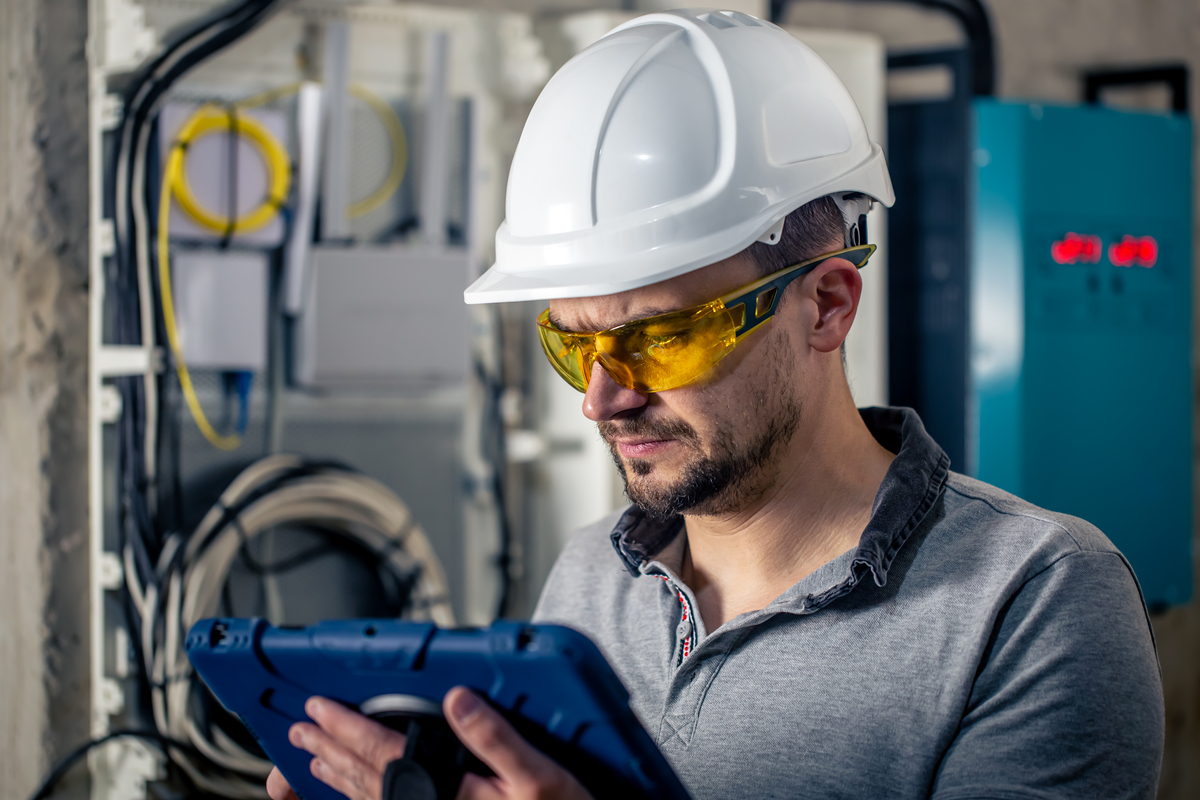
Challenges and Considerations
The use of wearable technology in construction presents a number of difficulties and factors that require careful attention.
1. Cost and ROI
The expense of purchasing and maintaining wearable technology in construction is one of the key obstacles. Although these technologies have many advantages, the initial cost can be high. To justify the cost, construction businesses must carefully assess the return on investment (ROI).
2. Data Security and Privacy
Wearable technology in construction gathers private information, such as worker biometrics and location data. It is essential to safeguard this data against theft or misuse. Businesses must put in place strict data security protocols and ensure that privacy laws are followed.
3. Training and User Acceptance
Introducing new technology necessitates instructing staff on its use. Adoption may be hampered by a reluctance to change and a learning curve. To increase acceptance, businesses must spend money on training initiatives and take user-friendly designs into account.
4. Calibration and Maintenance
For accurate operation, wearable technology in construction requires proper calibration and routine maintenance. Inaccurate data and lower efficiency may result from failure to maintain these devices.
5. Integration with Existing Systems
It might be challenging to integrate wearable technology in construction with current construction management systems and procedures. Compatibility problems could occur, necessitating specialized solutions and knowledgeable IT support.
6. Safety and Reliability
Worker safety cannot be compromised by wearable technology in construction. They should be built to withstand the physical impact, dust, and debris present on construction sites. To prevent equipment failures that could be dangerous, reliability is essential.
7. Data Overload
Data overload may result from the massive volumes of data that wearables collect. For businesses to get useful insights, appropriate data management and analysis processes must be in place.
8. Regulatory Compliance
It’s crucial to adhere to industry-specific rules and safety requirements. Employers in the construction industry must make sure that their wearable equipment complies with these standards.
9. Cultural Change
The organization may need to undergo a culture transition in order to implement wearable technology in construction. Instead of using technology as a means of monitoring employees, workers should embrace it as a tool that enriches their work.
10. Scalability
As projects grow or new technologies appear, businesses must take into account how easily wearable technology in construction can scale.
It takes careful planning, investment, and dedication to worker safety, privacy, and efficiency to address these issues. The construction industry can gain a lot from the successful integration of wearable technology in construction, increasing its competitiveness, safety, and efficiency.
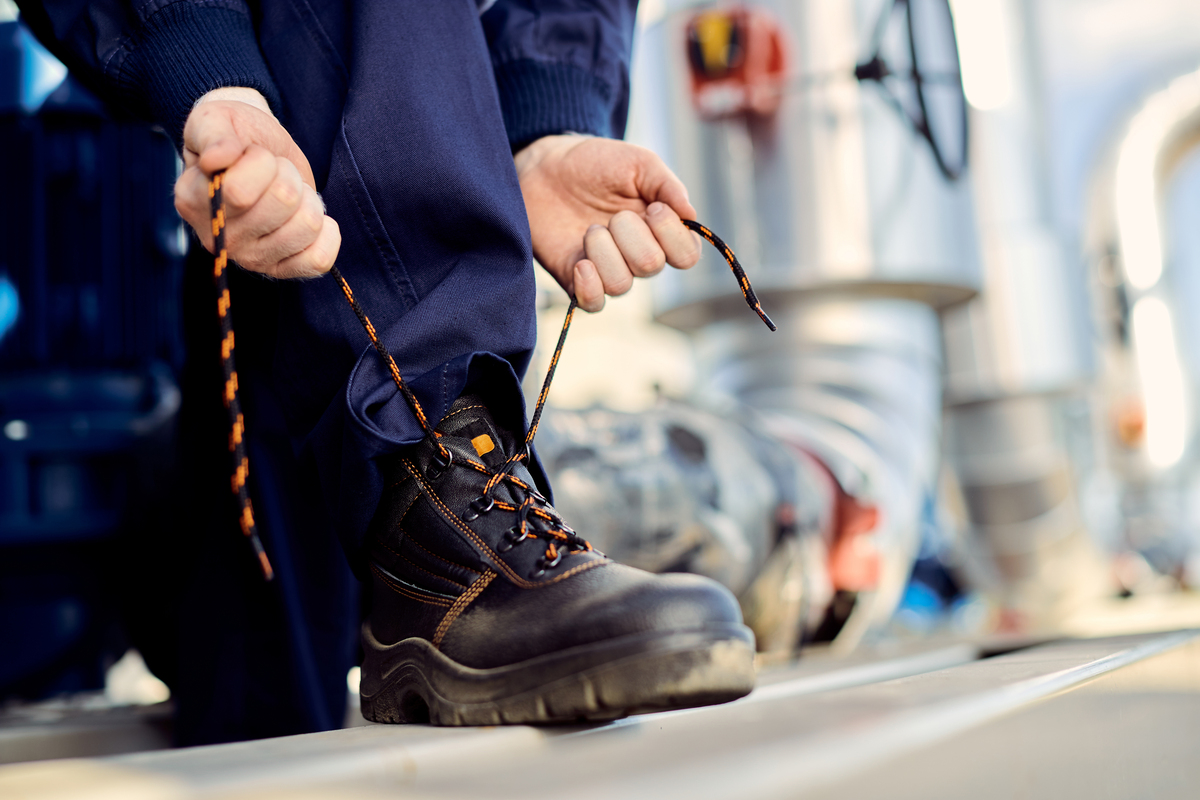
Future Outlook
The use of wearable technology in construction has significant potential to transform how projects are organized, carried out, and managed. A number of significant trends and advancements are anticipated to propel the evolution of wearable technology in construction as technology continues to advance at a rapid rate.
1. Integration with Building Information Modeling (BIM): In order to easily combine real-time data from wearables into project models, wearable technology in construction will progressively interface with BIM systems. This connection will make predictive analytics and project monitoring more accurate, improving decision-making and project results.
2. AI and Machine Learning Integration: Wearables will use machine learning and artificial intelligence (AI) to automate tasks and deliver predictive insights. Better hazard detection, resource allocation, and preventative safety measures will result from this, which will lower accidents and increase project efficiency overall.
3. Enhanced Augmented Reality (AR) and Virtual Reality (VR) Experiences: Wearable technology in construction will improve its AR and VR capabilities, allowing for immersive project visualization, design reviews, and training simulations. Construction industry personnel will be able to communicate more effectively and make fewer mistakes by working together virtually.
4. Energy Harvesting and Long Battery Life: Future wearables will make use of energy harvesting technologies like solar and kinetic energy to dramatically increase battery life. This will decrease downtime for charging and improve the usability of wearables during extended construction shifts.
5. Enhanced Material Durability: Wearable technology in construction will be made of durable materials that can endure the harsh conditions of construction sites, such as exposure to moisture, dust, and impacts, ensuring lifespan and dependability.
6. Regulatory and Safety Standards: As wearable technology spreads, industry-specific standards and laws will develop to guarantee its ethical, secure, and safe application in the building industry.
7. Customization and Personalization: Wearables will become more and more adapted to the requirements and preferences of specific workplaces, boosting user acceptance and happiness. Employees will have the freedom to select the wearables that are most suited to their roles and responsibilities.
The potential for wearable technology in construction to increase efficiency, productivity, and safety is enormous. These technologies will likely become vital tools in the hands of construction workers as they continue to develop and integrate with processes, spurring innovation and transforming the sector. Construction firms that adopt these innovations will be more likely to prosper in the sector’s changing environment.
Conclusion
The construction sector is about to undergo a transformation thanks to wearable technology in construction, which will bring about a new era of efficiency, productivity, and safety. The trends discussed here show the variety of uses and significant advantages wearables have for construction industry personnel. The future of wearable technology in construction is bright and promising as technology develops.
A game-changer is expected to result from the merging of wearable technology with building information modeling (BIM) technologies. Predictive analytics will be made possible by the seamless integration of real-time data from wearables into project models, which will improve decision-making. Since projects can be continuously monitored thanks to this connection, there will be fewer mistakes, fewer delays, and better resource use.
It is impossible to undervalue the importance of machine learning and artificial intelligence (AI). These technologies will be used by wearables to automate repetitive chores and offer predictive insights. This will greatly improve safety precautions, accident avoidance, and general project effectiveness. Wearables with AI capabilities can foresee possible risks, enabling proactive mitigation techniques.
Additionally, improved Augmented Reality (AR) and Virtual Reality (VR) experiences are on the horizon. Immersive project visualization, design reviews, and training simulations will be made possible by wearable technology in construction. As a result, building projects will collaborate more effectively, communicate more clearly, and make fewer mistakes.
Wearables will become stronger and more energy-efficient to ensure they can withstand the demands of the construction environment. These gadgets will endure the worst conditions and have a longer battery life because of their durable materials and energy-harvesting technologies, which also improve usability and decrease downtime.
Employees will be able to select wearables that complement their responsibilities and preferences thanks to customization and personalization, which will play a significant role. Higher user adoption rates and increased staff satisfaction will result from this flexibility.
As the use of wearable technology in construction grows, industry-specific standards and rules will be developed to ensure its security, safety, and moral application. These standards will serve as a framework for the careful integration of wearable technology in construction into the processes of the construction industry.
The construction sector is being transformed by wearable technology in construction, which is more than simply a trend. It provides real-time data to construction professionals, improves safety protocols, streamlines project management, and foretells a time when building projects are carried out more precisely and effectively. As construction companies negotiate the changing face of the industry, embracing these innovations will be crucial to their success.
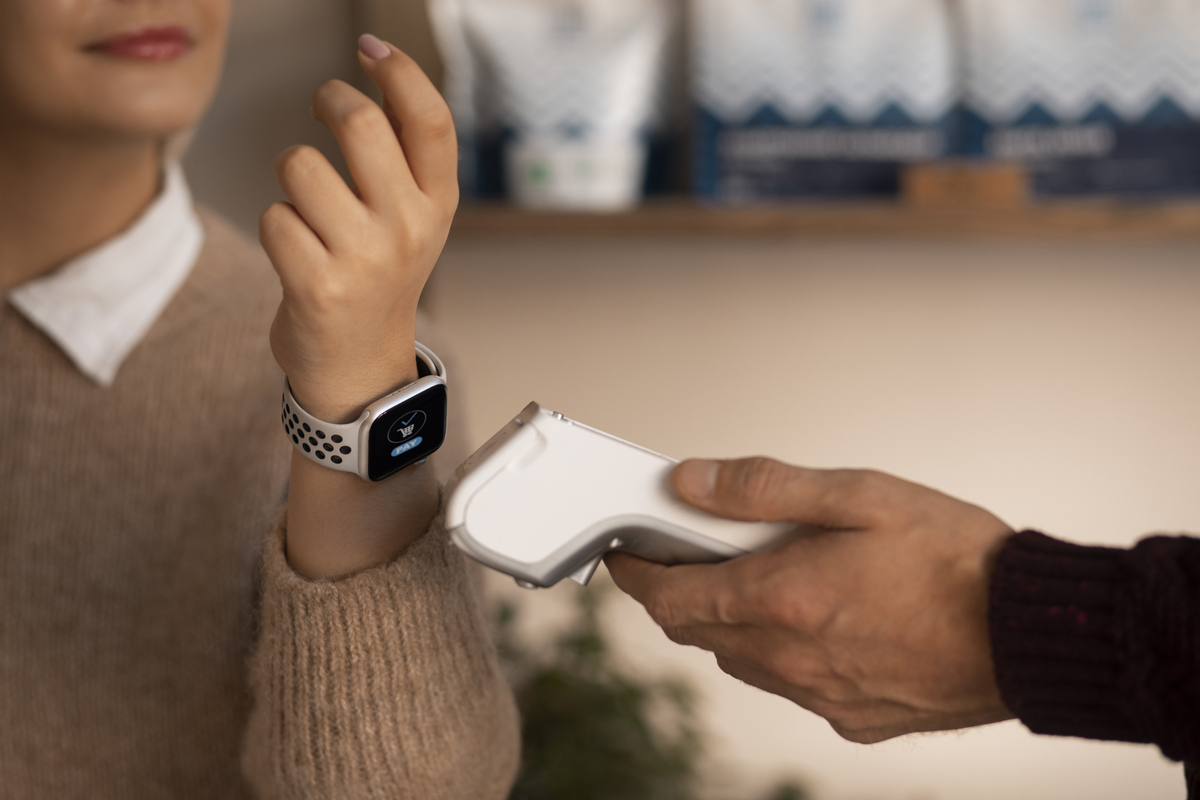
Suggested articles for reading:
TokenMe: Monitoring Solution in Construction Industry
Top 10 Wearable Sensors for Workers in Construction
Resources:
PwC | Associated General Contractors of America | For Construction Pros | Construction Technology Media | Boxx Modular | VisiLean | One Key Resources | Chubb
For all the pictures: Freepik, Unsplash

